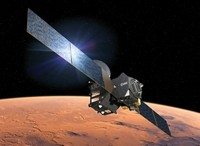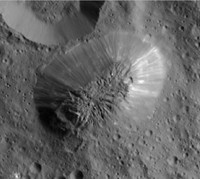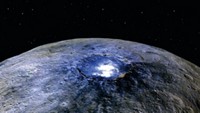Advertisement
Grab your lab coat. Let's get started
Welcome!
Welcome!
Create an account below to get 6 C&EN articles per month, receive newsletters and more - all free.
It seems this is your first time logging in online. Please enter the following information to continue.
As an ACS member you automatically get access to this site. All we need is few more details to create your reading experience.
Not you? Sign in with a different account.
Not you? Sign in with a different account.
ERROR 1
ERROR 1
ERROR 2
ERROR 2
ERROR 2
ERROR 2
ERROR 2
Password and Confirm password must match.
If you have an ACS member number, please enter it here so we can link this account to your membership. (optional)
ERROR 2
ACS values your privacy. By submitting your information, you are gaining access to C&EN and subscribing to our weekly newsletter. We use the information you provide to make your reading experience better, and we will never sell your data to third party members.
Environment
Value Of The Fallen
by Josh Fischman
February 25, 2013
| A version of this story appeared in
Volume 91, Issue 8
To celebrate C&EN’s 90th anniversary, one Editor’s Page each month will examine articles from C&EN Archives. Featured articles are freely downloadable for one month.
On Friday, Feb. 15, terror rained from the air over the Russian city of Chelyabinsk, which some took as good fortune.
A meteor, weighing about 10,000 tons, streaked across the sky and crashed outside the city. The shockwave shattered windows, injuring at least 700 people. The exploding fireball frightened thousands.
To some, however, it looked like money. Pieces of rock have popped up for sale locally and on the Internet. A palm-sized black rock, offered on eBay, was bid up to $4,100. The New York Times reported that someone offered $1,300 to a woman for a stone that knocked a hole in her roof.
There is real value in meteor fragments that can’t be measured in cash, though. They are tremendously important to science. Over the decades, stories in C&EN—collected in the magazine’s online archives—have chronicled the ways that scientists have used this skyfall to explore origins questions. Among them: Where do meteors come from, and did they carry basic building blocks of life on Earth?
These questions have attracted the attention of notable scientists like Harold C. Urey, who won the Nobel Prize in Chemistry in 1934 for the discovery of deuterium, one of the two isotopes of hydrogen. By the 1950s, Urey’s attention had turned to the origins of the solar system and its components, among them meteors. Just where these rocks came from was being debated by scientists. In 1952, C&EN reported that Urey proposed asteroid collisions as an answer to the mystery, in a lecture to the National Academy of Sciences (C&EN, Dec. 15, 1952, page 5272). After analyzing the iron content of 94 samples from meteorites, he suggested that crashes between asteroids—which have cores of iron—in the main asteroid belt between Mars and Jupiter could produce many of the stones that fell to Earth.
The moon was another candidate source, but chemists ruled that out in 1968, C&EN reported (C&EN, April 29, 1968, page 12). The spacecraft Surveyor V, VI, and VII had landed on the surface. Researchers used an α-scattering analysis technique to examine elements present in various samples. “Because of the low amounts of iron-group elements (titanium, vanadium, chromium, manganese, iron, cobalt, and nickel) found,” C&EN wrote, chemist Anthony L. Turkevich of the University of Chicago and colleagues concluded the moon samples had little in common with meteorites commonly found on Earth. That fit with Urey’s ideas.
Urey, who won the 1973 Priestley Medal from ACS (C&EN, July 24, 1972, page 9), was also interested in the origins of amino acids, the building blocks of proteins. In a classic experiment with Stanley Miller, published in 1953, the duo showed such acids could form from gases thought to exist in the early atmosphere of our planet. Many scientists, though, have been searching for signs of amino acids on meteorites.
Now you see them, now you don’t. Early reports of acids like glycine and serine may have been contamination from human handlers (C&EN, Dec. 7, 1970, page 80). But “although slim, such evidence does exist,” C&EN reported from a session at an ACS national meeting in San Diego in 2001. A meteorite that hit Australia in 1969 had more than 70 different amino acids, including several of the 21 found in biological organisms (C&EN, May 7, 2001, page 45).
But the rarity of finds like that makes astrochemists wonder about their accuracy. Replicating the discovery of such amino acids in other fragments would be helpful. In particular, scientists would like to know if glycine, a complex molecule, could survive the trip to Earth from space. “It represents a level of chemistry that has wide possibilities,” says Senior Editor Elizabeth Wilson, who covers astrochemistry for C&EN. Scientists have just taken their first pass at the Russian meteor fragments, Wilson reports on page 8, and learned they contain magnesium-rich chrysolite and sulfite. She’ll be following future analyses closely. And you can follow the story of meteors and meteorites throughout the C&EN Archives, at pubs.acs.org/journal/cenear.
Views expressed on this page are those of the author and not necessarily those of ACS.





Join the conversation
Contact the reporter
Submit a Letter to the Editor for publication
Engage with us on Twitter